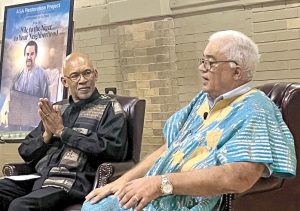Someone is badly injured or suffering a sudden, serious illness. A family member or bystander calls 911.
The person who answers the 911 call rapidly verifies a few facts with the caller (such as getting a call-back number and the location where the ambulance is needed). The 911 dispatcher then coaches the caller on what to do and what not to do for the patient until the ambulance arrives.
Upon reaching the scene, the ambulance crew quickly assesses the severity of the patient’s illness or injury. Working quickly, carefully, and compassionately, they make sure the patient can breathe and has a pulse.
For patients suffering a heart attack, a drug overdose, or some other medical crisis, the crew might stay on the scene for longer than family members or bystanders might think is necessary. Some people still think of ambulance service as simply a quick, safe trip to the hospital. Modern ambulance service is more like bringing part of the hospital to the patient. Ambulance crews start lifesaving care at the scene and continue the care on the way to the hospital. The goal is to prevent further decline, improve the patient’s status and deliver the patient to the hospital in the best possible condition (ideally, in better condition than when the crew reached the patient).
If the patient isn’t breathing or is having trouble breathing, the crew assists with breathing. For some patients, the crew pushes oxygen into the lungs by squeezing a special bag with a mask that covers the nose and mouth. When a patient can’t breathe at all, the crew might insert a tube down into the airway (to direct oxygen right into the patient’s lungs).
To assess the condition of the patient’s heart, the crew uses an advanced device called a cardiac monitor. For some kinds of heart attacks, the crew will help the heart resume beating normally by sending controlled electrical shocks through the patient’s chest. The crew may also give the patient medications through an intravenous line (IV).
Some patients are suffering a traumatic – or major – injury. A stab wound or gunshot may cause severe bleeding (externally and/or internally). A car crash or a fall can break bones and damage organs…there are many causes of trauma. For trauma patients, ambulance crews quickly address life-threatening injuries and transport to a hospital capable of treating major injuries. With critically injured patients, the crew’s goal is to begin the transport within 10 minutes of reaching the patient.
During the transport – for both trauma and medical patients, the crew continues the care they started at the scene and adds to that care. At the hospital, the crew gives the emergency department staff a detailed report, verbally and electronically. Once the patient is transferred to the hospital staff, the crew cleans their ambulance and tells their dispatcher they’re ready for the next call.
If you are interested in the work described above, think about becoming an emergency medical technician or paramedic. The work is rewarding in many ways. EMTs and paramedics help sick and hurt people every day, sometimes making the difference between life and death. The pay rises with length of service and as one earns higher certifications. Bottom line: You can contribute to the community and make a good living working for an ambulance service such as AMR Central Mississippi. There is a high demand for EMTs and paramedics. At AMR in Jackson, we teach courses leading to certification and pay you during the 10 weeks of training. To learn about entering the medical transportation field, contact Malcolm Robinson with AMR in Jackson at 601-368-2360 or Malcolm.robinson@gmr.net.
Jim Pollard is public affairs manager at AMR Central Mississippi, the state’s busiest ambulance service. He has worked nearly 43 years in the medical transport field. Based in Jackson, Pollard writes and speaks frequently on topics related to ambulance service.






